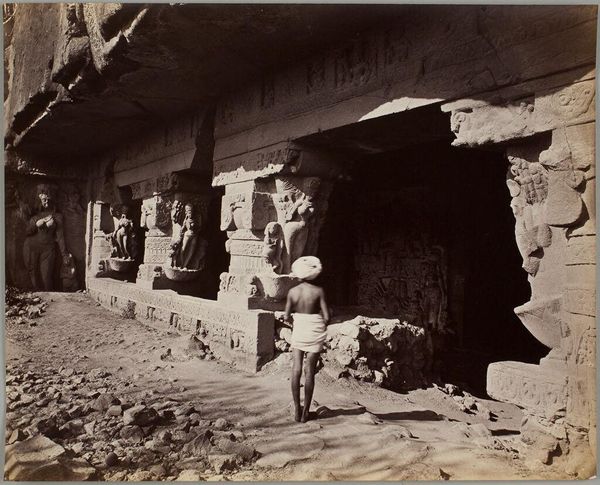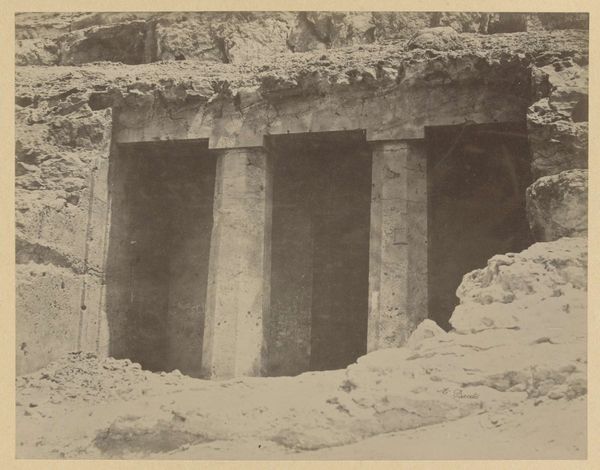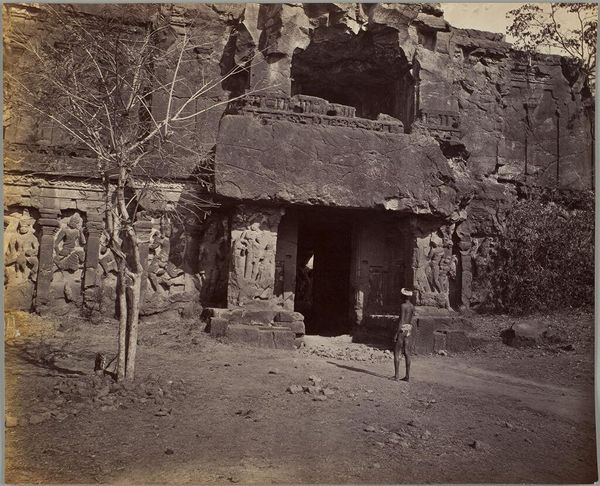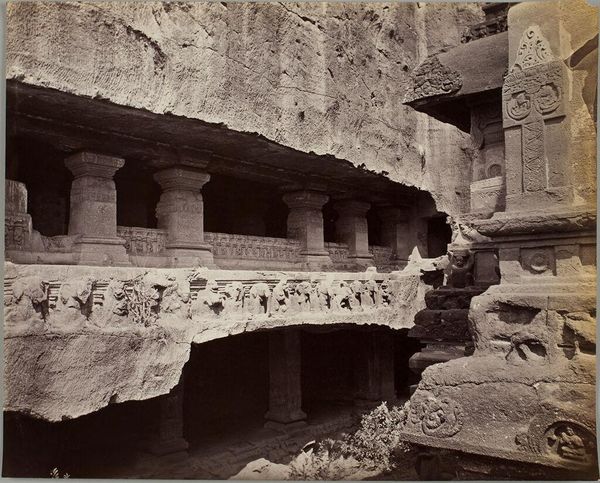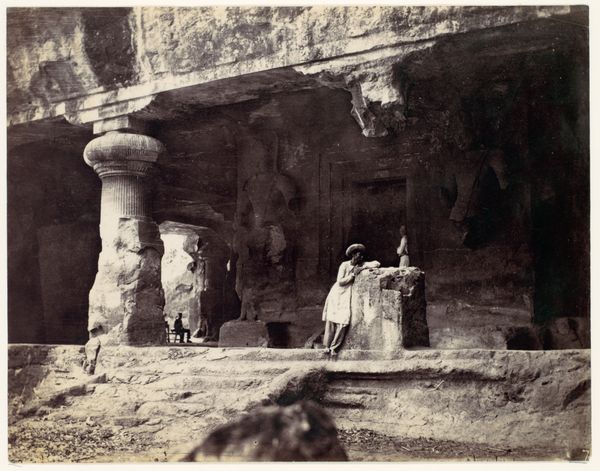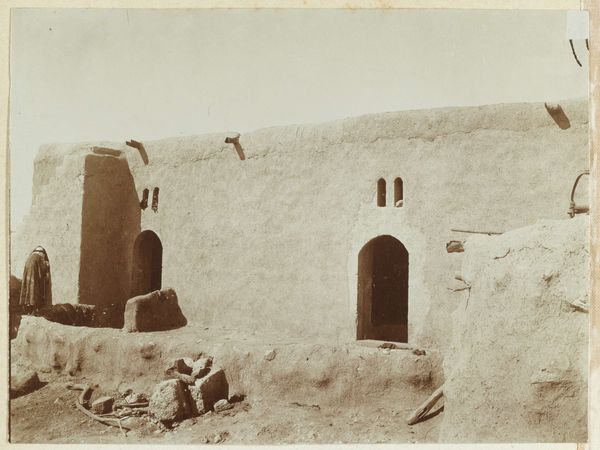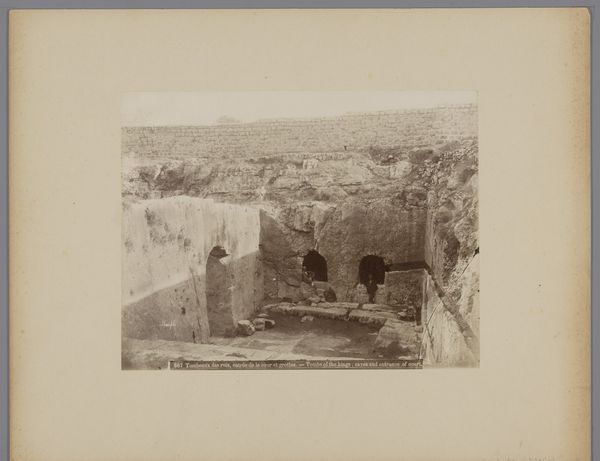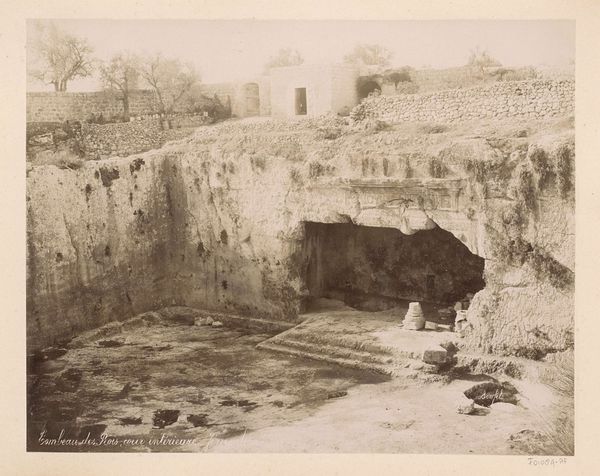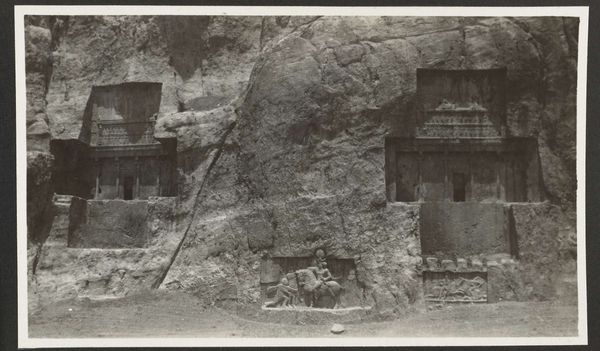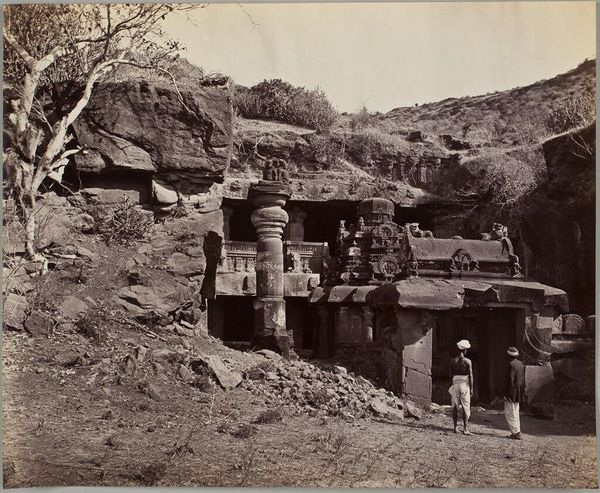
#
excavation photography
#
natural shape and form
#
photo restoration
#
organic shape
#
outdoor photography
#
carved into stone
#
monochrome photography
#
gloomy
#
outdoor activity
#
shadow overcast
Dimensions: height 238 mm, width 285 mm
Copyright: Rijks Museum: Open Domain
This photograph of the Elephanta Caves near Mumbai, India, was taken by Samuel Bourne, a British photographer active in the mid-19th century. Bourne employed the wet collodion process, a laborious technique that required coating, sensitizing, exposing, and developing glass plates within a short timeframe. Consider the immense effort involved in capturing this image. The heavy equipment had to be transported to remote locations, and the chemical processes demanded meticulous attention. Bourne's photographs were made as commodities, to be circulated back in the West as evidence of imperial power. They reveal the tension between artistic intention, technical expertise, and the colonial gaze. The photograph’s sepia tones and soft focus lend a romantic aura to the scene, yet the sharp details also document the architectural and sculptural details of this ancient site. Bourne’s work thus straddles the line between objective documentation and subjective interpretation, raising questions about the role of photography in shaping perceptions of culture and place.
Comments
No comments
Be the first to comment and join the conversation on the ultimate creative platform.

